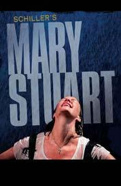Phyllida Lloyd: A Tale of Two Queens
Last year, I was jogging in Central Park—I was here finishing the sound mix for the movie of Mamma Mia! at the Brill Building. I skidded to a halt in front of a statue of Friedrich Schiller, located on the Mall next to a bust of Beethoven. What was Schiller doing there? How many others were stopping to greet him?!
I discovered there are statues of Schiller all over the United States, that thousands of German-born soldiers fighting for Lincoln in the Civil War regarded him as their “poet of freedom” and that there were productions of Schiller plays in America as early as 1795! It seemed like a great omen for the Broadway transfer of his classic drama Mary Stuart, which I first directed at the Donmar Warehouse four years ago.
My last Broadway show was Mamma Mia! in 2001. We were the first big production to open after 9/11, and we went through several moments of doubt during rehearsals—how could a merry musical be a suitable thing in the aftermath of that terrible disaster? We later came to understand how necessary theater can be in bringing people together during such times.
Now I am here at the Broadhurst with my friends Janet McTeer and Harriet Walter, with no doubts whatsoever as to our purpose. Janet and I had been looking for a play after our all-female The Taming of the Shrew, in which she had played Petruchio. At first she could not decide whether she wanted to play Mary Queen of Scots or Elizabeth I. Both were such barnstorming roles. Then we found Harriet and persuaded her to join us on our adventure in the role of Elizabeth.
This play is a roller coaster, with brilliantly constructed scenes that actors love to perform. I was just as struck by what linked the women as by what separated them. Over the course of their lives, they virtually changed places: Mary enjoyed a childhood of immense luxury as Queen of Scotland and then France. Elizabeth grew up in a much more hostile environment, with a mother who had her head cut off, and she herself was imprisoned in the Tower of London. By the time the play begins, Mary is a prisoner on death row, and Elizabeth is “Gloriana,” with all the power and privilege of being Queen of England—but it’s their isolation, as women in power surrounded by men, that’s so marked. Hence our decision to perform the play with the women in period costume and the men in modern dress.
In the dawn of a new political era, Mary Stuart really does feel like a play for our times. A political thriller about the cost of power, the moral climate in which governments operate and how much we are prepared to pay to ensure our homeland security. It feels more modern than many a new play.
Janet, Harriet and I are having a ball here, learning so much from our American cast members and proud to be part of this Broadway season so rich in plays. As actors, these two women are both bungee jumpers, and they’re wonderful onstage together. I’m very lucky to be working with them.
I did a “Run for the Parks” race a few weeks ago and saw Schiller looking through the trees as we crossed the finish line. After seeing Mary Stuart on Broadway, perhaps a few more people will stop to wish him well.
